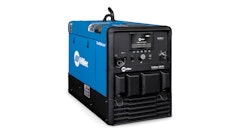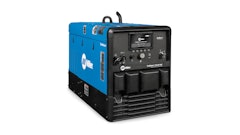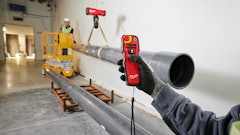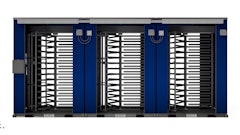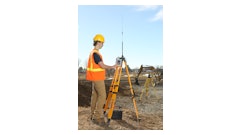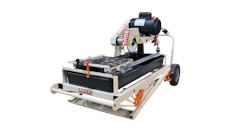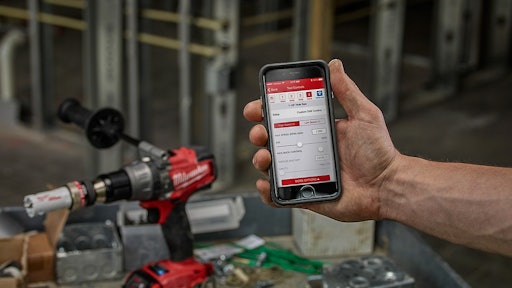
In the ever-changing world of electronics and the Internet comes a new technology movement—the “Internet of Things” (IoT). It’s in all of our futures and will influence how we both live and work.
Many factors are moving us in the direction of the IoT; inexpensive internet rates, coverage everywhere, the almost universal availability of smart phones and tablets, and the increased use of sensors and electronic components in almost everything we use. The IoT is about controlling our devices remotely through the use of the internet. It also allows manufacturers to collect information about how their products are used so they can improve them. Over the next few years it’s estimated that billions of devices and electrical equipment will be remotely controlled via the internet.
The Milwaukee Tool company, headquartered in Brookfield, Wisconsin is the first tool manufacturer in the U.S. to link tools to the Internet, also building Bluetooth connectivity into some of their product line. Given the fast rise in interest to the IoT, other manufacturers will soon follow Milwaukee’s lead. Here’s what they are doing to help you work more effectively.
ONE-KEY
Over the past couple year’s developers at Milwaukee have been working on a free-to-everyone cloud based program to serve contractor needs. Christian Coulis, vice president of Product Management says ONE-KEY will never stop evolving. It’s available now for anyone to use and can be accessed through both the web and a mobile app. The first benefits will include inventory management, tool reporting and tool control but this is only the beginning—the future doesn’t have limits.
Inventory Management
This was the first component on the site to launch. It offers a central place for users to keep track of their tools company wide. It records all the relevant information about a tool; specs, when it was purchased, notes on any repair work, and location. If you are entering a Milwaukee tool all you have to do is type its model number into the data base and the rest of the information populates the form automatically (minus repair history and location). ONE-KEY also accepts tool information from other manufacturers but in that case you have to input all the information. You can even log in things like brooms and other equipment used on jobsites.
An important function of inventory management for contractors who perform work at multiple construction sites is the ability to assign tools to a jobsite. During the planning phase of a contract you can quickly assemble an inventory of tools for a project. You can also easily remove a tool from one project and post it to another—you always know where your tools are.
Tool Reporting
This feature of ONE-KEY was launched with the introduction of a Utility Crimping tool used primarily by the electrical trades. Specifications often require specific crimping pressures when a fitting is crimped to a conduit or tubing. Sensors in the tool automatically record the time of crimping and the pressure. This information can automatically be downloaded to the ONE-KEY cloud site to generate reports that will confirm the success and accuracy of an installation, information that can be passed on to inspectors and owners representatives. Coulis says that over time they will introduce a variety of sensors in other tool lines to greatly expand reporting functions. Construction as an industry depends more and more on accuracy and tool reporting will help the industry move in that direction.
Tool reporting will also help manufacturers get information from sensors designed to diagnose and track maintenance issues. Users can be notified that maintenance is needed before serious damage occurs and manufacturers can use these reports to design better tools.
Tool Control
In January of 2016 Milwaukee Tool will introduce battery operated models of drill/drivers, hammer drill/drivers, impact drivers, and compact impact-wrench tool models with ONE-KEY capabilities. Up until this time factories preset tool settings but now workers will be able to program infinite settings matched to an application. This will be accomplished by building Bluetooth and wifi capabilities into tools and will change the way we use tools.
Connecting tools to Bluetooth and WiFi
Coulis says tool manufacturers currently preset such things as constant rpm, fixed torque shutoff range, adjustable torque shutoff range, trigger ramp up rate and current sensing/control at the factory. But what if you could adjust settings on your tool to optimize performance for a specific application? For instance, what if you are using a drill-driver or impact driver to drive 100 screws and you want each screw to properly secure boards together without breaking a screw? That’s the idea behind ONE-KEY’s “Tool Control” platform. The factory still has pre-settings but you can change them to conform to specific applications.
On a jobsite workers will use their smart phone or tablet app to direct them to a settings screen on ONE-KEY for the tool they are using. They will be able to change settings such as rpm and torque to set optimal tool performance for a task and the tool will automatically stop when an operation is complete. But you will also be able to access pre-set applications that will automatically provide optimal performance for the task—you select the material and fastener variables and ONE-KEY makes the changes. In addition, you can create a profile for the tool for essentially any application that is not in the pre-select menu. This profile can be saved and re-used at any time. These new tools will also have a switch that allows users to preset as many as four applications. Many jobs require multiple operations so switching between preset applications without using your smart phone will save a lot of time.
If you misplace a tool you can even use your smart phone to locate it so long as it is within Bluetooth range
IoT
The process of change always has pluses and minuses; it can be hard to make adjustments. But good and useful changes always prevail so people must adapt. Changes involving the IoT will perhaps be easiest for the millennial generation because they embrace electronic technology, smart phones, computers and software more easily than for older generations—other generations will take longer. In the world of battery operated tools Milwaukee Tool is opening the door to the IoT, introducing change. There will be changes that users will like and some they won’t use—you will have an opportunity to help shape this new technology.
All tool manufacturers are beginning to explore the possibilities the IoT presents and there is much to come. Five years from now if a tool manufacture is just starting this involvement they might very possibly find themselves on life support.














